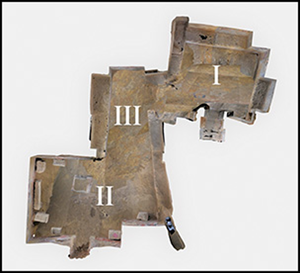Published online by Cambridge University Press: 18 August 2021

This article presents the results of an archaeoacoustic analysis conducted inside the three chambers of the fourth-century BC Etruscan painted tomb of Tomba dell'Orco at Tarquinia. Using digital sound samples and an acoustic recording protocol, the study demonstrates how, in some areas of the tomb, low-frequency sounds, such as drumming and chanting, produce lengthy reverberation times. These effects may have been associated with the natural rumble of thunder, which played a significant role in Etruscan society, as indicated in secondary literary sources and material culture. The study provides a more comprehensive understanding of the Etruscan tomb space, while identifying new avenues of research in pre-Roman and other ancient Mediterranean funerary contexts.